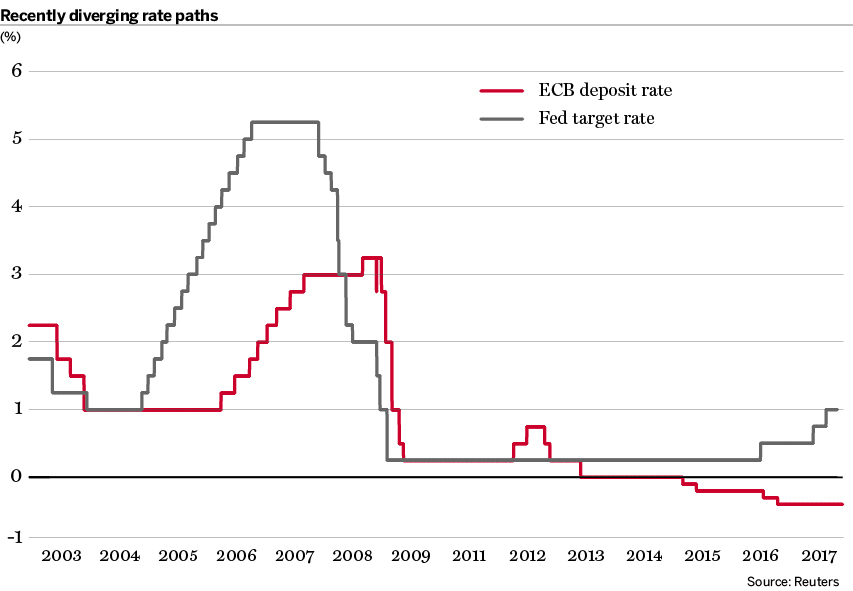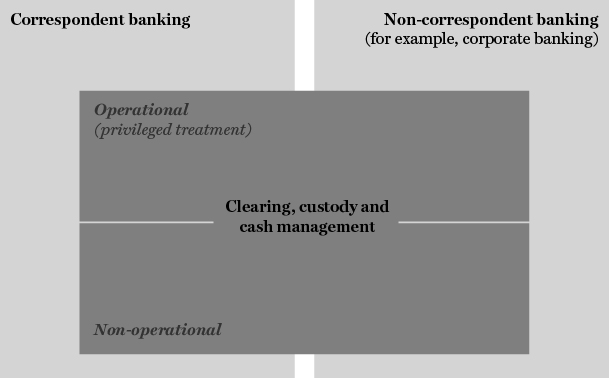Previously, clients would call their bank to warn of an unintended overdraft position; today they call if they want to leave more money than usual on their account. Koral Araskin, liquidity manager in Deutsche Bank’s institutional cash management division, explains how regulation has affected the liquidity management landscape and why there is no one-size-fits-all approach to deposit optimisation.
Q: In January 2017, banks took another step closer to fully implementing the post-crisis regulations set out by the Basel Committee on Banking Supervision, as part of the phase-in arrangements. In addition, the Basel III reforms triggered a new interpretation on operating cash. What are the main considerations for institutions going forward?
A: That is true: under Basel III there is a much stricter definition of the term ‘operating cash’. Under Basel I and II, operating cash could pretty much include all types of cash received from a depositor and, therefore, the more deposits a bank held, the better. However, now under Basel III, there is a need to understand the correlation of clients’ deposits to the clients’ product usage depth with the bank to determine whether a client deposit is ‘good’ or not.
More from this report
Essentially, there are four main considerations. You need to be able to identify when liquidity is ‘good’, or operational; when it is non-operational; what it means for service providers who support clients’ liquidity and their intraday liquidity monitoring; and, most importantly, what clients could do to maximise the return from their relationships with those providers.
Q: How important is it to have an in-depth understanding of the range of rules directly affecting banks’ capacity to support liquidity?
A: It’s essential. There are several elements of Basel III alone that affect bank liquidity. The most underestimated one in connection to deposits is the leverage ratio. This has been designed to tackle the increasing on- and off-balance sheet leverage that existed in the banking system before the crisis.
The leverage ratio is not a risk-sensitive measure, but is ascertained by viewing the bank’s capital in relation to its average assets and exposures. As this constrains the carrying of assets, banks are more cautious about what they place on their balance sheet. This also applies to cash deposits, which, to a certain extent, will end up as assets at the central bank, and as such influence the leverage ratio and consume capital.
Within the balance sheet, other aspects of regulation, such as the liquidity coverage ratio [LCR] and net stable funding ratio [NSFR], will also have an impact. The NSFR is designed to limit a bank’s reliance on short-term wholesale funding, while the LCR requires a bank to have an adequate supply of high-quality liquid assets on hand to tackle a 30-day liquidity stress scenario. The LCR in particular has been brought in to ensure that banks have the right types of cash to meet any loan commitments in that period of financial stress.
Additionally, we are about to move into a new era when it comes to gaining a better understanding of intraday liquidity demand and supply in the financial industry. While the regulation in this area is still at an early stage, it is clear that this previously invisible spot will trigger much movement and investment into mature businesses, such as cash clearing.
Not only are there many interlinking aspects to take into consideration, but so is the fact that central banks themselves have different interpretations of the Basel III guidelines. This complicates the situation even further.
Q: Earlier, you mentioned a change in how ‘good’ liquidity is defined. Can you explain this in greater detail?
A: With the new liquidity rules for banks, one of the main intentions is to prioritise deposits less likely to be withdrawn at short notice during a stress scenario. It is pertinent to consider the distinctions between a financial institution’s (FI’s) and a non-FI’s money. Generally speaking, correspondent banking money is considered to be fully at risk of run-off in a stress scenario.
That said, a wholesale client’s operational deposits that form part of clearing, custody or cash management are considered to be ‘more sustainable’ due to its dependence on the bank’s continued services, even during the 30-day stress period. Indeed, as stated by the European Banking Authority: 'Deposits maintained by the depositor to obtain clearing services that fulfil all of these conditions shall then be subject to a 25% or 5% outflow rate, even if they are held on correspondent banking accounts.' This would typically be defined as ‘good’ liquidity and receive privileged treatment.
Similarly, evergreen or short-term deposits with a tenor of more than 30 days are deemed ‘good’, given the fact that they represent an opportunity for the deposit-taking bank to use these funds over a longer period of time, thereby supporting higher yielding assets.
Additionally, every bank will have more specific stress scenarios that, as an example, could trigger additional tenors that they need to focus on in terms of managing liquidity reserves. Hence, banks could have additional appetite for certain tenors.
Q: What does that mean for bank product pricing and solution structuring?
A: Given that we are now operating in an environment in which some deposits are considered more valuable than others, it is natural to assume that this results in differentiated pricing. However, it would be wrong to assume – from Deutsche Bank’s perspective – that deposit pricing is solely driven by regulatory reform.
In some cases, we have client relationships that span decades, so we factor in commercial aspects of the business affiliation. As such, there is no ‘one size fits all’. We work closely with our clients to help them find the right amount of cash required to deal with operational objectives, liquidity and yield within the overall context of their business.
Q: How does Deutsche Bank approach this issue?
A: We are closely monitoring the liquidity portfolio worldwide to better understand the client and currency mix across our global client base. We do so not only for the major clearing currencies – the euro, US dollar, British pound and Japanese yen – but also for all other so-called multi-currency deposits we offer clearing services for.
Core to our business is building strong partnerships and focusing on a constructive dialogue with our clients. As an example, we speak to our clients individually if we observe any change in liquidity behaviour that could trigger opportunities or need to be addressed. We also build relationships into our clients’ treasury functions when it comes to liquidity-related aspects.
We want to understand the liquidity pattern of our clients to better serve them. This may then result in better client conditions, but it could also raise demands of clients by requiring stronger clearing flows to retain good conditions.
Q: As one of the largest clearers in the market, can you offer FI clients more favourable solutions or conditions?
A: I strongly believe so. Being active in the world’s major currencies as a dominant clearer helps to trigger and fulfil the regulatory criteria of having strongly operational relationships with according operational deposits.
Still, individual clients might have much higher liquidity reserves than their operational flows require. Here, we offer call and term deposits, as well as recommend other types of asset classes. This helps the clients to maintain operational sight deposits at preferred conditions, while maximising yield by moving less operational segments into higher yielding but still fairly liquid asset classes.
While the concept of negative interest rates is usually more a pain than a gain, it may even help here to avoid cost by co-operating and finding alternatives with mutual benefit. Therefore, even in euros a client with a broad clearing business portfolio with us may get preferred treatment dependent on their individual clearing activity breadth and depth.
Q: What will happen now that interest rates are rising again?
A: Besides the changes in interest rate levels, we also have to keep in mind that the markets are flushed with liquidity. Central banks have a critical task here to balance and align these with the overall economic developments. With the increasing transparency on intraday liquidity supply and demand, it will be interesting to observe the shifting gears in monetary policy and how these might change current patterns and flows.
From a liquidity management perspective, changes in interest rates might result in a potential to recalibrate a client portfolio. Generally speaking, you would like to help long-standing client relationships, with increasing operational business flows, participate strongly during rate hikes, and try to protect them from rate cuts – even into negative territory – as much as possible.
Looking at the pace of change in interest rates in the major currencies – US dollars and euros – is key. While there seems to be a clear – or at least expected – dollar rate trajectory, it is still unclear if, when, how, and to what extent rates will increase on the euro side. At the moment, I only see expectation levels rising.





